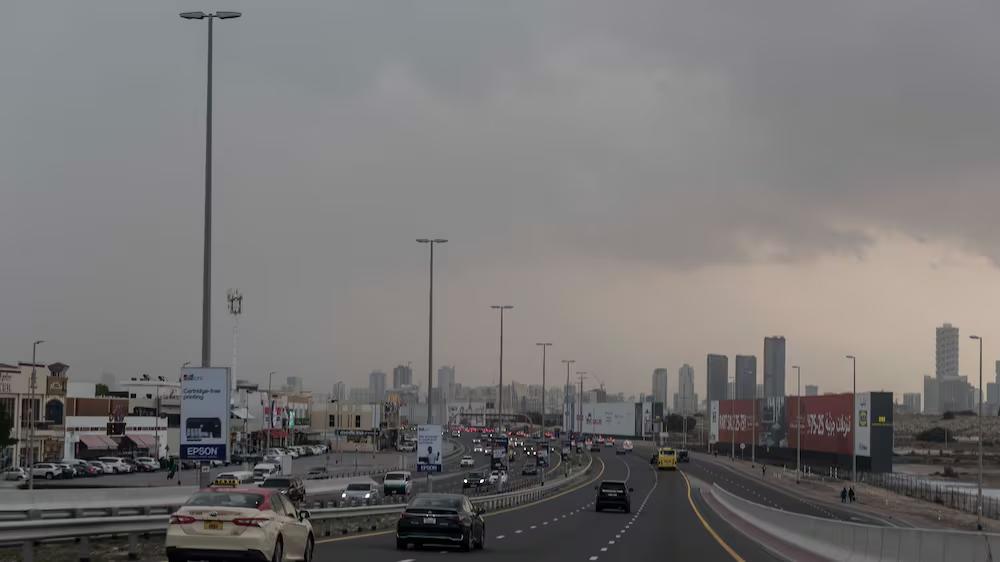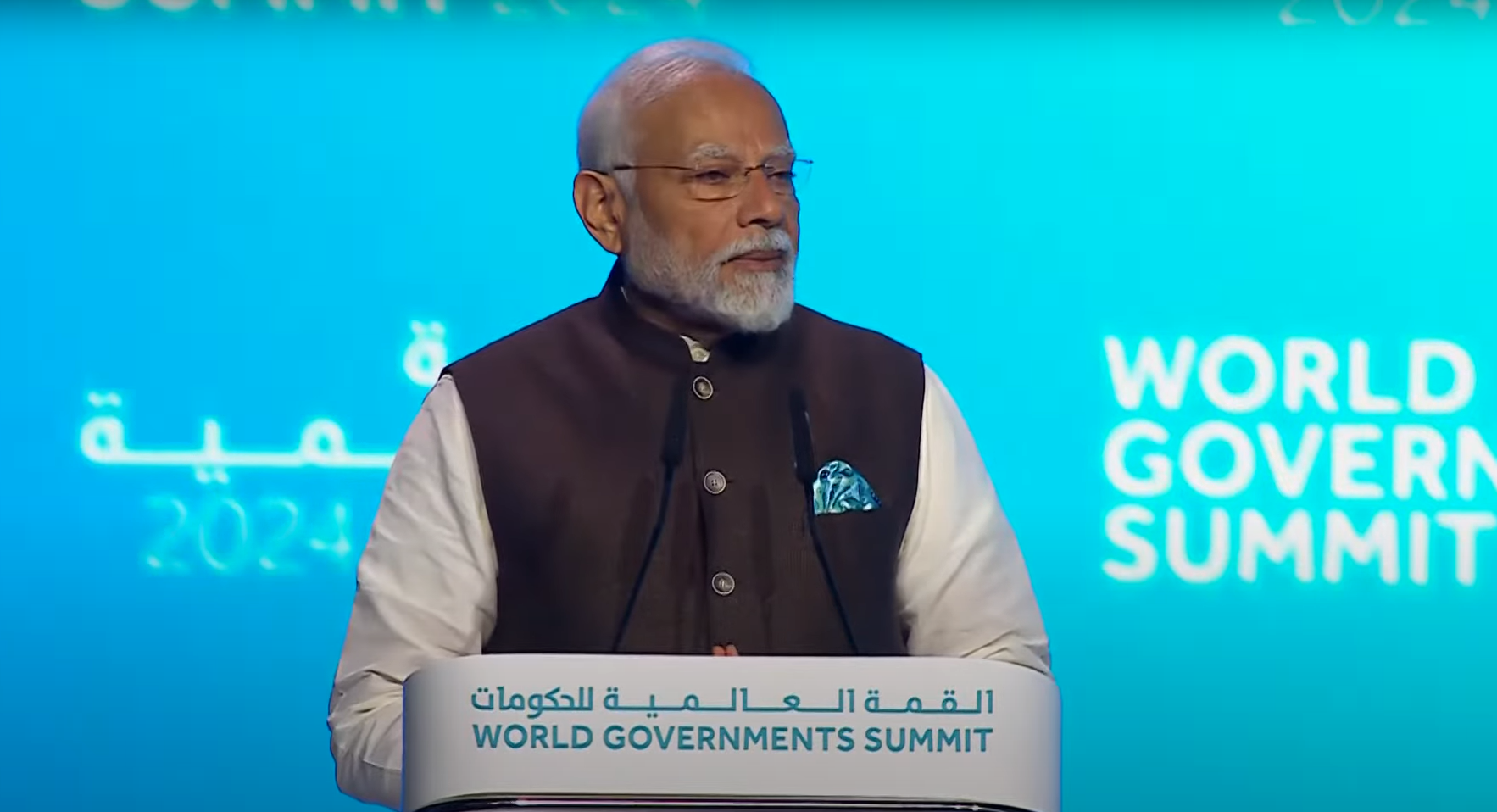Cloud Seeding

- 18 Apr 2024
Why is it in the News?
The UAE recorded the heaviest rain ever after a severe thunderstorm hit the country on April 15, killing at least one person, causing damage to homes and businesses, and bringing air travel to a standstill in Dubai.
What Led to the Heavy Rains in Dubai?
- The primary reason for these heavy rains was a storm system, which was passing through the Arabian peninsula and moving across the Gulf of Oman.
- According to a different report, rains could have been exacerbated by cloud seeding, a process of spraying salt mixtures in clouds that would result in condensation of the cloud and eventually cause rainfall.
- Several reports quoted meteorologists at the National Center for Meteorology as saying they flew six or seven cloud-seeding flights before the rains.
Is climate change responsible for the event?
- Some experts have suggested that the soaring global temperatures could also be behind the event.
- Higher temperatures cause evaporation of water not only from land but also oceans and other water bodies, meaning a warmer atmosphere holds more moisture.
- Studies have found that for every 1 degree Celsius rise in average temperature, the atmosphere can hold about 7% more moisture.
- This makes storms more dangerous as it leads to an increase in precipitation intensity, duration, and/or frequency, which ultimately can cause severe flooding.
- While the average global temperature on the Earth has increased by at least 1.1 degrees Celsius since 1850, the UAE has witnessed an increase of almost 1.5 degrees Celsius in the past 60 years.
- The increase in temperatures is mainly caused by the rise of heat-trapping greenhouse gas (GHG) emissions since the Industrial Revolution.
- However, it is extremely difficult to attribute any particular extreme weather event to climate change.
- It is because there are multiple factors, like patterns of natural climate variability, such as El Niño and La Niña, that contribute to such events.
What is Cloud Seeding?
- Cloud seeding is a type of weather modification where substances like silver iodide or dry ice are dispersed into clouds to encourage precipitation, such as rain or snow.
- In countries like the UAE, where temperatures are high and annual rainfall is minimal, cloud seeding is employed to alleviate pressure on limited groundwater sources by enhancing precipitation.
What is UAE's cloud seeding programme?
- The UAE initiated its cloud seeding program in the late 1990s, making it one of the first Middle Eastern countries to use this technique.
- Collaborative research with institutions like the National Center for Atmospheric Research (NCAR) and NASA has bolstered their efforts.
How does cloud seeding work?
- Cloud seeding is a technique where “seeding agents" such as silver iodide or salt are introduced into clouds to stimulate condensation and trigger rainfall.
- Weather forecasters monitor atmospheric conditions and identify suitable clouds for seeding based on precipitation patterns.
- This technique can increase rainfall by up to 30-35 percent in clear conditions and 10-15 percent in more humid conditions.
What is the environmental impact of cloud seeding?
- Cloud seeding alters the precipitation patterns of a region/locality.
- This may negatively impact neighboring ecosystems, which were to receive rain for the seeded clouds originally.
- Introducing seeding agents might impact the natural hydrological cycle as it may change the natural soil moisture levels, groundwater recharge, and river flows.
- Some experts worry about the potential for silver toxicity if cloud seeding becomes widespread.
- Silver iodide is a common seeding agent.
- Silver toxicity could pose risks to aquatic life and soil health.
- Therefore, even with the promise cloud seeding holds, responsible stewardship and thorough evaluation of its environmental impacts are crucial.
PM Modi addresses World Government Summit 2024 in Dubai (MEA)

- 15 Feb 2024
Why is it in the News?
Prime Minister Modi attended the World Government Summit 2024 as guest of honour in Dubai recently.
What is the World Governments Summit?
- The World Governance Summit serves as a worldwide platform committed to shaping the trajectory of government initiatives across the globe.
- This annual gathering takes place in Dubai, United Arab Emirates, convening leaders and experts from various sectors.
- Each year, the Summit sets the agenda for the forthcoming era of governance, emphasising the utilisation of innovation and technology to address pressing global challenges.
- Since its establishment in 2013, the Summit has been steadfast in its mission to influence the evolution of governmental practices and foster a brighter future for humanity.
World Governance Summit Organization:
- The World Governance Summit Organization operates as an impartial, nonprofit entity with a global reach, dedicated to influencing the future landscape of governance.
- Headquartered in Dubai, United Arab Emirates, the organisation serves as a nexus for collaboration and idea exchange among governmental and non-governmental stakeholders.
- 2024 Summit: Dubai, United Arab Emirates
- Theme - 'Shaping Future Governments'
Key Highlights of PM Modi's Speech:
- Streamlining Government Operations: The Prime Minister addressed the evolving landscape of governance, emphasising India's adoption of transformative reforms under the ethos of "Minimum Government, Maximum Governance.”
- Human-Centred Governance: Drawing from India's experience leveraging digital technology for welfare, inclusivity, and sustainability, he advocated for a human-centred approach to governance.
- He highlighted India's focus on people's participation, last-mile delivery, and women-led development to foster an inclusive society.
- Need for Global Collaboration: Given the interconnected nature of the world, the Prime Minister stressed the importance of governments collaborating and learning from each other to tackle future challenges effectively.
- Model of Governance: Highlighting the current imperative, the Prime Minister underscored the necessity for governance to be inclusive, technologically adept, transparent, and environmentally sustainable.
- He outlined priorities such as Ease of Living, Justice, Mobility, Innovation, and Business in public service delivery.
- India's Climate Change Commitment: Reaffirming India's unwavering commitment to climate change action, he urged people to join Mission LiFE (Lifestyle for Environment) to foster a sustainable world.
- Leadership Role of India: The Prime Minister elaborated on India's leadership role, particularly as the chair of G-20, highlighting efforts to address global challenges and elevate development concerns of the Global South.
- He advocated for reforming multilateral institutions to give greater voice to the Global South in decision-making processes.
- India as a Global Partner: Emphasising India's commitment to global progress, he reiterated India's role as a "Vishwa Bandhu" (friend of the world), pledging continued contributions to global advancement.
